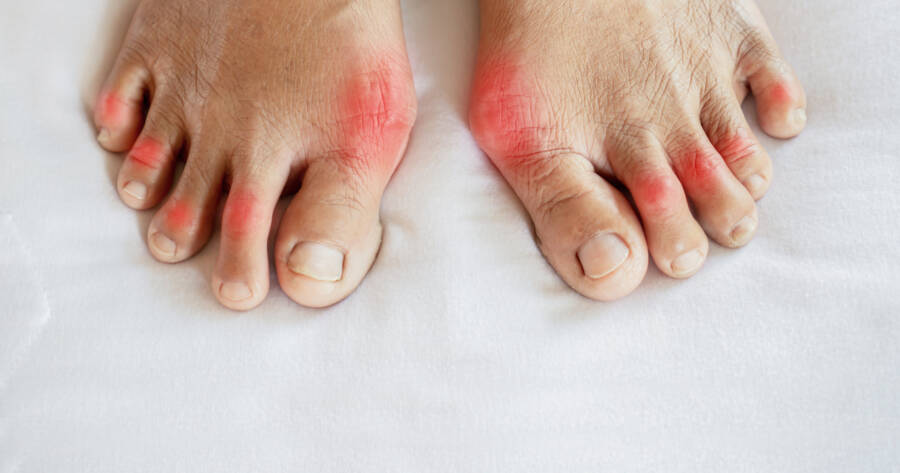Psoriatic arthritis can cause joint pain, inflammation, and stiffness, making it difficult to perform daily activities. Early detection is essential to prevent further damage to the joints.
Swollen Fingers and Toes
Psoriatic arthritis can start in small joints like the fingers and toes before progressing. It can be accompanied by spondylitis, which is inflammation of the joints between the vertebrae, and dactylitis, or swelling of the finger or toe joints, explains Healthline.1
Dactylitis, also known as “sausage fingers,” is a symptom present in up to 50-percent of people with psoriatic arthritis, and is rare in other types of arthritis, except gout or pseudogout. When caused by psoriatic arthritis, dactylitis may affect individual digits in a different way, notes the source, meaning that swelling could occur in one hand and not the other.
Foot and Elbow Pain
In addition to the fingers and toes, WebMD states that psoriatic arthritis can also cause pain in the feet and elbows.2 This can be another first indication of the disease.
Inflammation associated with psoriatic arthritis can produce symptoms similar to tennis elbow, explains the source. In this case, the pain is felt from the outside of the elbow to the forearm and wrist.
Nail Changes
According to Medical News Today, nail changes are a common issue for people with psoriatic arthritis, affecting 80 to 90-percent of individuals, as compared to 10 to 55-percent in people with psoriasis who do not have arthritis.3
Shallow depressions in the nail plate, also known as pits, are a notable symptom of psoriatic arthritis. Ridged nails may also be an early sign of joint disease that can appear years before the onset of arthritic symptoms. Therefore, it’s a good idea to consult your doctor about any nail changes.
Popular Treatment Options
Managing psoriatic arthritis involves several treatment options to control symptoms and slow down disease progression. According to the Mayo Clinic, disease-modifying antirheumatic drugs (DMARDs) are usually prescribed to prevent permanent joint and tissue damage.
Mild cases may benefit from nonsteroidal anti-inflammatory drugs (NSAIDs), massage therapy, and physical or occupational therapies. Severe cases may require joint injections or replacement surgery.4 However, finding the most effective treatment for psoriatic arthritis may take time and patience as it requires trial and error.
